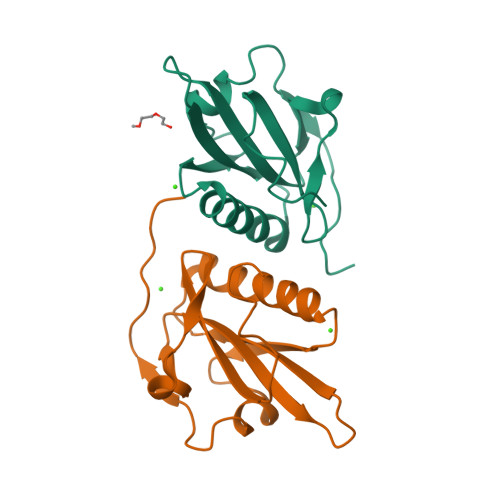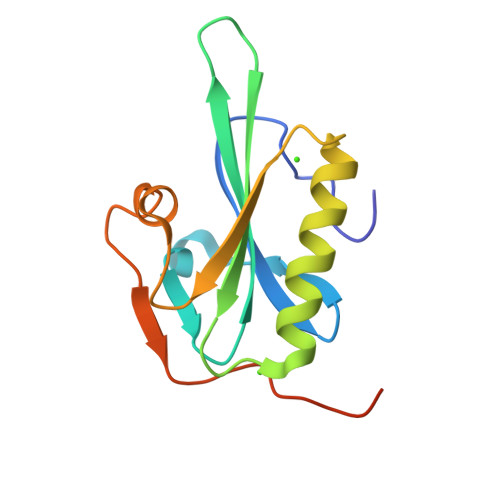Bonsai Gelsolin Survives Heat Induced Denaturation by Forming beta-Amyloids which Leach Out Functional Monomer.
Badmalia, M.D., Sharma, P., Yadav, S.P.S., Singh, S., Khatri, N., Garg, R.(2018) Sci Rep 8: 12602-12602
- PubMed: 30135452
- DOI: https://doi.org/10.1038/s41598-018-30951-3
- Primary Citation of Related Structures:
5ZZ0 - PubMed Abstract:
Here, we report that minimal functional gelsolin i.e. fragment 28-161 can display F-actin depolymerizing property even after heating the protein to 80 °C. Small angle X-ray scattering (SAXS) data analysis confirmed that under Ca 2+ -free conditions, 28-161 associates into monomer to dimer and tetramer, which later forms β-amyloids, but in presence of Ca 2+ , it forms dimers which proceed to non-characterizable aggregates. The dimeric association also explained the observed decrease in ellipticity in circular dichroism experiments with increase in temperature. Importantly, SAXS data based models correlated well with our crystal structure of dimeric state of 28-161. Characterization of higher order association by electron microscopy, Congo red and ThioflavinT staining assays further confirmed that only in absence of Ca 2+ ions, heating transforms 28-161 into β-amyloids. Gel filtration and other experiments showed that β-amyloids keep leaching out the monomer, and the release rates could be enhanced by addition of L-Arg to the amyloids. F-actin depolymerization showed that addition of Ca 2+ ions to released monomer initiated the depolymerization activity. Overall, we propose a way to compose a supramolecular assembly which releases functional protein in sustained manner which can be applied for varied potentially therapeutic interventions.
Organizational Affiliation:
Csir-Institute of Microbial Technology, Chandigarh, India.



















